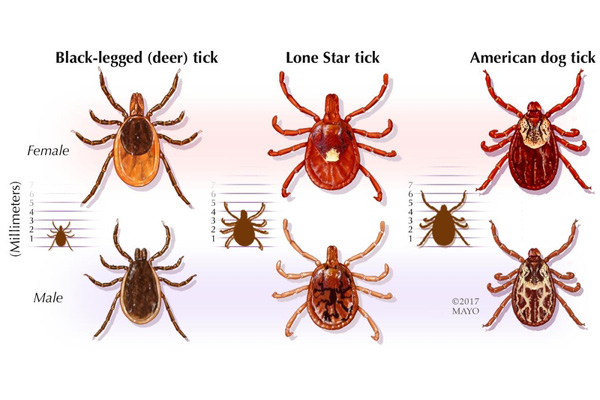How to Treat a Tick Bite.
Warm weather entices you to go have fun outside. But while you’re having fun golfing, camping, picnicking and hiking, ticks are looking for a host. Ticks live in woods, fields and grassy areas. All of them survive on blood drawn from people or animals, and they can pass along disease in the process.
What is a tick bite?
Ticks are parasites that feed on warm-blooded hosts by biting them. A tick bite can infect humans and animals with bacteria, viruses and protozoans (organisms made up of one cell) that can cause diseases. Some of these conditions can be very serious and may include: Lyme disease.
What time of year are ticks most active?
Almost all year round. – Source.
Adult ticks, which are approximately the size of sesame seeds, are most active from March to mid-May and from mid-August to November. Both nymphs and adults can transmit Lyme disease. Ticks can be active any time the temperature is above freezing.
How do you tell if it’s a tick bite?
A small bump may appear at the site of the tick bite. This is typical. If it develops into a larger rash or you develop a rash anywhere, possibly with a bull’s-eye pattern, it may indicate Lyme disease. The rash usually appears within 3 to 14 days.

Other symptoms include:
- Flu-like symptoms like Fever, fatigue, headache, or muscle aches
- Neurological symptoms like dizziness, numbness, or tingling
- Swollen lymph nodes near the bite area
How to treat a tick bite
If you’ve been bitten by a tick, it’s important to address it promptly to minimize the risk of potential infections.
Using fine-toothed tweezers, gently grip the tick as close to the skin as possible. Pull steadily away from the skin without twisting or crushing the tick. Wash your skin with water and soap afterwards. Apply an antiseptic cream to the skin around the bite.
- Remove the Tick: Use fine-tipped tweezers to grasp the tick as close to your skin’s surface as possible. Gently and steadily pull upward without twisting or jerking. Make sure you remove the entire tick, including its mouthparts. If you’re unsure about the removal process, consider seeking medical help.
- Clean the Area: Clean the bite area and your hands with rubbing alcohol, an iodine scrub, or soap and water.
- Dispose of the Tick: Place the tick in a sealed bag or container, or you can flush it down the toilet. This can help if you need to identify the tick later.
- Avoid Home Remedies: Don’t use substances like petroleum jelly, nail polish, or a hot match to try to remove the tick. These methods can actually increase the risk of the tick transmitting bacteria.
- Monitor for Symptoms: Keep an eye on the bite area for any signs of infection or an allergic reaction, such as redness, swelling, or a rash. Also, be vigilant for symptoms of tick-borne diseases, especially Lyme disease. Symptoms of Lyme disease can include fever, headache, fatigue, and a characteristic “bull’s-eye” rash. If you notice any concerning symptoms, consult a healthcare professional.
- Seek Medical Attention: If the tick was attached for a significant amount of time or if you develop any symptoms like fever, rash, or flu-like symptoms, it’s a good idea to consult a healthcare provider. They can determine if further medical treatment or testing is necessary.
- Prevention is Key: The best way to manage tick bites is to prevent them. When spending time outdoors in areas where ticks are common, wear long sleeves, pants, and closed-toe shoes. Use insect repellent that contains DEET, picaridin, or other EPA-approved ingredients. After being outdoors, thoroughly check your body, clothing, and gear for ticks.
When to seek care
Tick bites, while most go without needing care, some do require seeing a provider. According to the Mayo Clinic, you should seek care when:
- You aren’t able to completely remove the tick.
- If the rash gets bigger. A small bump may appear at the site of the tick bite. This is typical. If it develops into a larger rash or you develop a rash anywhere
- Consult your provider even if the rash disappears
- You develop flu-like signs and symptoms
- You think the bite site is infected. Signs and symptoms include pain, change in skin color or oozing from the site.
It’s always a good idea to be cautious when going outdoors. Dress appropriately, avoid bushy areas and use insect repellent. At Wilmington 1st Walk-In, we are here to help if you think you’ve been infected by a tick bite. Click here to contact us.
xo.

One comment
Pingback: How to thoroughly plan your next medical check up - Wilmington 1st Walk-In
Comments are closed.